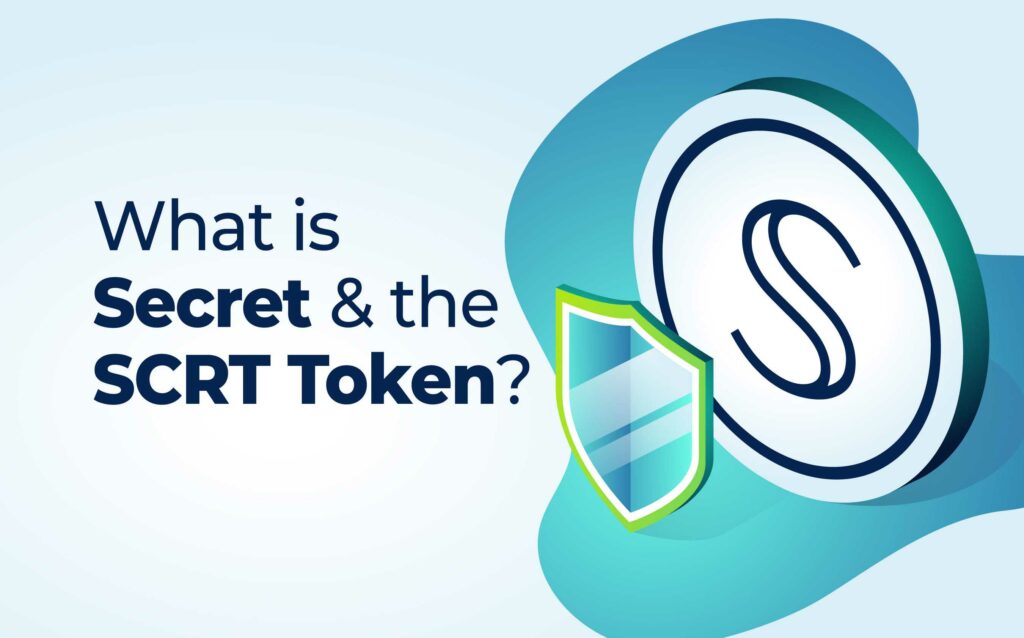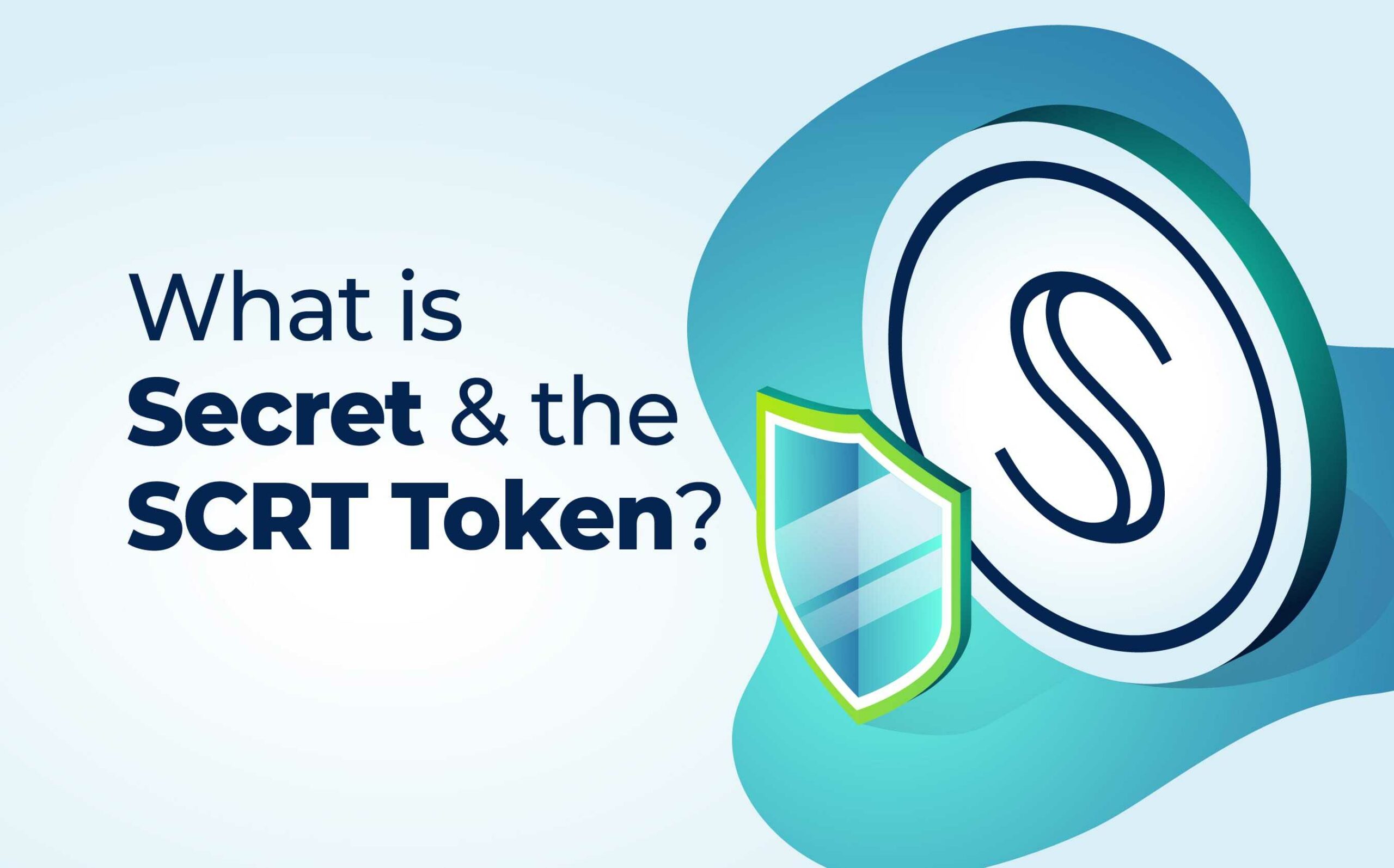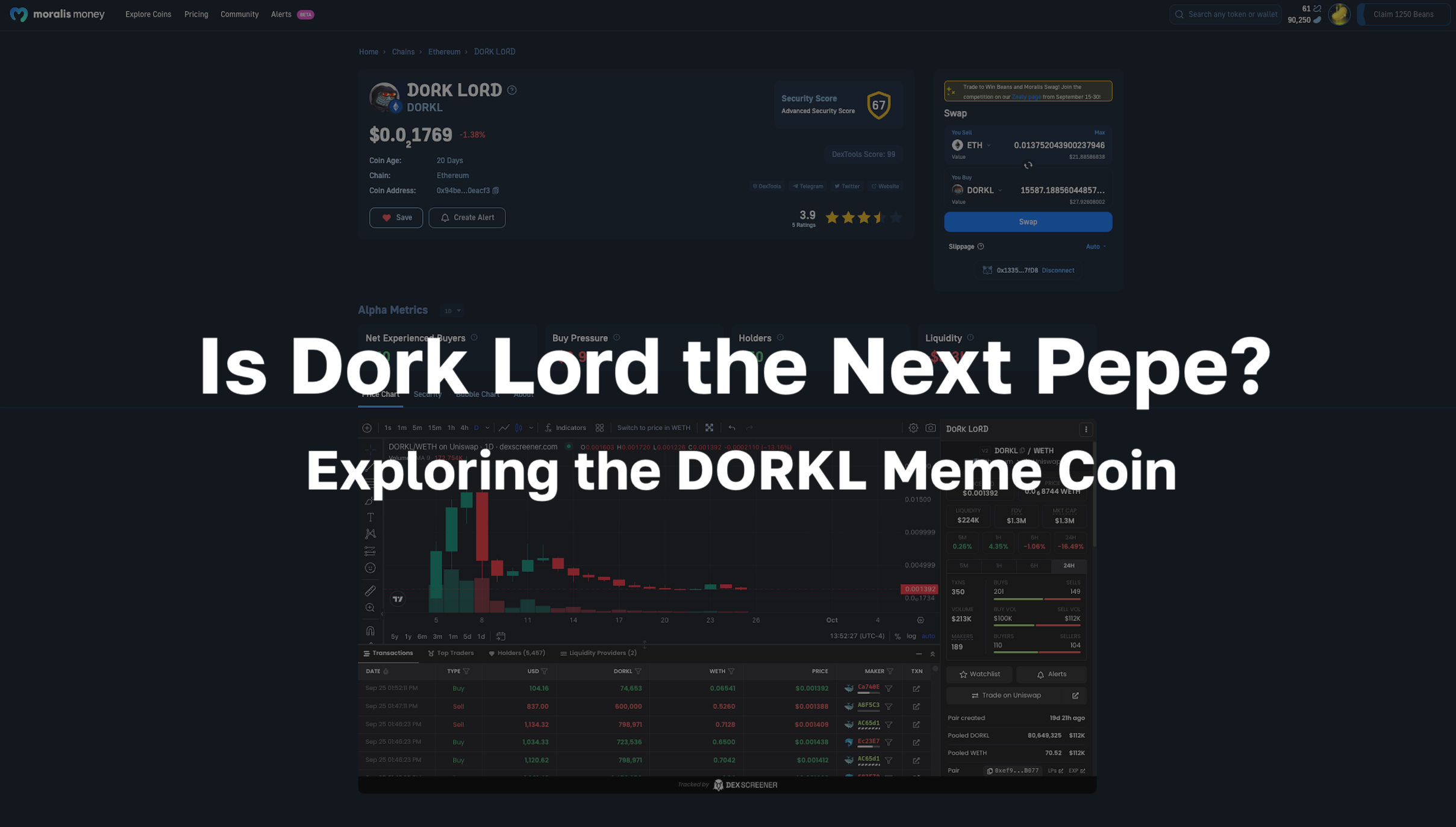
Secret Network is a decentralized network of nodes that use privacy-preserving technologies to provide secure and anonymous computations. Most smart contract-based decentralized finance (DeFi) protocols operate on public blockchains like Ethereum. However, the Secret Network crypto ecosystem is home to several private DeFi platforms that benefit from the privacy features of Secret Network, including trusted execution environments (TEEs). Also, the platform boasts various tools and services, including private smart contracts, Secret Network staking, and the Secret Network Bridge. Furthermore, the Secret Token Bridge allows users to convert the native SCRT coin into the interoperable SCRT token for use on different blockchain networks.
In this article, we’re going to dive deep into the Secret Network crypto ecosystem. We’ll explore the Secret Network Bridge, Secret Network staking, SCRT coin, and the SCRT token. Also, we’ll discuss Secret NFTs, Secret DeFi, private smart contracts, and the SecretSwap exchange.
Moralis Academy is the number-one Web3 and blockchain education suite available online. New to crypto? No problem! We provide expert-guided video tutorials that cater to all levels of experience. See our Blockchain & Bitcoin 101 course to gain a firm understanding of blockchain technology. Or, check out the Crypto for Beginners course to learn how to safely set up a crypto exchange account to buy, sell, and trade crypto! Then, see our Bitcoin Monetary Revolution course. Here, you’ll learn about the history of money and currency and how blockchain is on course to disrupt the legacy financial system. Join our community of over 30,000 students today at Moralis Academy!
What is Secret Network?
Secret Network is “the first blockchain with privacy-preserving smart contracts”. Most smart contract-enabled blockchains tend to be public. However, Secret Network uses private smart contracts with encrypted inputs and outputs to provide data security and privacy.
The Secret Network team believes that privacy is the key to the mass adoption of blockchain and Web3 technologies. As such, Secret’s private smart contracts combine the usability of Ethereum smart contracts, the scalability and interoperability of Cosmos, and the privacy of Monero. By combining these features, Secret Network aims to create the foundations of “the next generation of successful Web3 applications” using enhanced privacy functionalities.
A decentralized network of nodes uses trusted execution environments (TEEs) to secure the network using a Delegated Proof of Stake (DPoS) consensus mechanism. This allows anonymous computations to be encrypted securely for use in many different applications. Also, Secret Network uses “viewing keys” to allow participants to select how and with whom they share transactional data. This provides users with greater control over their privacy while providing avenues to easily maintain regulatory compliance.
Furthermore, the Secret Network crypto ecosystem is host to a range of decentralized, permissionless applications written in the Rust programming language. These applications can interact with Secret’s private smart contracts and use encrypted data without exposing it. Moreover, the project is on a mission to “advance privacy as a human right and a public good”.
Programmable Privacy
Generally speaking, most crypto privacy solutions focus on transactional privacy. This entails obfuscating the data of sending and receiving parties in transactions. However, programmable privacy takes a comprehensive approach by facilitating encryption across all multiple computations. For example, applications on Secret Network can benefit from encrypted inputs, outputs, and states. In turn, this provides various novel use cases for smart contracts and decentralized applications (dApps).
Trusted Execution Environments (TEEs)
A Trusted Execution Environment (TEE) serves as “a neutral party in the form of hardware for secure and private computations”. TEEs reside in a remote part of the processor of a device that is not part of the primary operating system. Also, TEEs provide a tamper-proof method of storing, processing, and protecting data. Each new node in the network undergoes a “remote attestation” process to verify the validity of TEE and other hardware.
SCRT Coin
Secret coin (SCRT) is the native cryptocurrency of Secret Network. Similar to Ethereum (ETH) and Bitcoin (BTC), SCRT coin is a requirement for participation throughout the network. When using applications on the network, users must pay gas fees and computational fees using SCRT coin. Also, participants can stake SCRT to secure the network and earn SCRT rewards in the process. Furthermore, SCRT coin holders can participate in the platform’s governance by voting on proposals to make changes to the protocol.
There are many ways to purchase SCRT. Users outside of the US can purchase directly from the Secret Network website. Plus, users can purchase SCRT from the SecretSwap exchange, which operates on Secret Network.
Secret nodes must stake SCRT coins to earn block rewards. SCRT coin holders that do not operate nodes can stake their tokens to a specific node as a type of bond by becoming a delegator. This entitles SCRT holders to a portion of network fees. Plus, secret nodes can use SCRT coin to participate in protocol governance.
SCRT Token
A wrapped version of SCRT is also available on various centralized crypto exchanges and decentralized exchanges (DEXs) as both an Ethereum ERC-20 token and a Binance Smart Chain (BSC) BEP-20 SCRT token. This includes Binance, Uniswap, and PancakeSwap. Accordingly, the SCRT token is a highly interoperable cross-chain asset.
Secret Network Staking
Secret Network relies on a Delegated Proof of Stake (DPoS) consensus mechanism to validate transactions and process computations. Validators known as “secret nodes” secure the network and must maintain constant uptime to receive block rewards. SCRT holders can participate in Secret Network staking by running a secret node or locking up SCRT with another node. By participating in Secret Network staking, not only can holders of the SCRT coin help to support the network, but they can also earn a passive income ranging between 25 and 30% return on investment (ROI).
Governance
Participating in Secret Network staking enables SCRT coin holders to take part in network governance. On-chain governance allows the community to submit and vote on proposals to improve the Secret Network crypto ecosystem and shape the platform’s future development.
Secret Tokens
Secret Tokens are private, programmable tokens similar to Ethereum ERC-20 tokens. They come in several forms and can represent both Secret Network-native assets and off-chain assets. Secret Tokens play various roles in Secret applications and can be minted by anyone.
Though Secret Tokens are inherently private, minting and burning them are publicly-viewable on-chain transactions. Furthermore, all Secret Token transactions and rolling balances remain encrypted and anonymous. To reveal the underlying values of these transactions, users have to generate a “viewing key”, which they can share for “compliance situations”.
Rather than providing complete transparency by default, network participants have control over the amount of privacy they wish to maintain. The generation of viewing keys helps to validate the identity of network participants who query specific accounts. In turn, this process aims to streamline compliance and regulatory data provision for auditing.
Among the most common Secret Token standards is the fungible SNIP-20 token. The SNIP-20 standard loosely represents Ethereum's ERC-20 and ERC-777 token standards, with enhanced privacy features. Secret Tokens are freely-tradable assets that can be used for minting non-fungible tokens (NFTs), trading and investing on privacy-preserving decentralized applications (dApps) built on Secret Network, and unlocking programmable privacy via Secret Bridges. In the future, we can expect to see the development of more products that incorporate Secret Tokens for a range of use cases.
Secret Network Bridge
Secret Network Bridge allows external blockchain networks to connect with Secret Network. Using a Secret Network Bridge enables these networks to create network-specific versions of the SCRT coin, known as SCRT tokens. Assets that pass through the Secret Network Bridge are usable in Secret Network DeFi applications and bring cross-chain utility to the SCRT token. Also, Secret Bridges use a “3 of 5 multisig authorization process”, removing any single point of failure while making it extremely difficult to compromise.
Currently, the Secret Network Bridge supports private Ethereum ERC-20 and Binance Smart Chain (BSC) BEP-20 SCRT token conversions. In the future, we can expect to see more blockchain networks supported. As such, Secret Network intends to become “ the go-to multichain interoperable privacy hub” for all blockchains.
Secret Contracts - Private Smart Contracts
Secret Contracts are private smart contracts that use an adapted version of CosmWasm v0.10 to provide “optimal integration with the Cosmos ecosystem”. These smart contracts have cross-chain functionality and use encrypted inputs, outputs, states, and addresses. The primary programming language used to write Secret Contracts is Rust. It was chosen because of the optimized runtime it offers, along with low transaction costs and convenient compiling.
When querying smart contracts in Cosmos, the identity of a querier cannot be cryptographically authenticated. However, Secret Contracts use encrypted viewing keys to validate caller identities and decrypt data associated with a wallet address. Also, the allowance feature allows users to allocate a portion of their funds to other accounts to allow balances to be managed from other contracts.
These private smart contracts are at the heart of the Secret Network DeFi ecosystem, underpinning many of the emerging applications and protocols built on the network.
To learn how to create your own smart contracts, check out the Ethereum Smart Contract Programming 101 course at Moralis Academy! Also, our Ethereum Smart Contract Programming 201 course is an advanced Solidity course for anyone who wants to become a smart contract developer. Regardless of experience, Moralis Academy can help you find your perfect career in crypto! If you have never tried coding before, see our Javascript Programming for Blockchain Developers course to learn the basics. Or, build your own decentralized applications (dApps) with our Ethereum dApp Programming course!
SecretSwap & Secret Finance Token (SEFI)
SecretSwap is a cross-chain private automated market maker (AMM) and liquidity protocol operating on Secret Network. The SecretSwap platform enables users to swap SNIP-20 tokens using private smart contracts with encrypted inputs and outputs. Resultantly, transactions on SecretSwap are secure and resistant to front-running.
The protocol draws cross-chain liquidity from Ethereum, Binance Smart Chain (BSC), and Monero bridges to reduce fees. Furthermore, SecretSwap does not use an order book and is not under the control of any centralized party. Plus, SecretSwap provides greater levels of privacy than many AMMs by protecting users from value extraction.
The governance token of the SecretSwap platform is the SEFI token. The SEFI token is a non-inflationary asset with a hard cap of one billion tokens. Holding the SEFI token entitles individuals to rewards. Plus, holders can participate in voting for SEFI funding.
Exploring Secret Network and SCRT Coin Summary
Secret Network is creating effective use cases for privacy-centric applications and technologies. The platform provides a diverse range of privacy-focused tools and services where “the degree to which the underlying data is exposed is programmable by default”.
Thanks to the next-generation Secret Contracts, a diverse range of private decentralized finance (DeFi) protocols are coming to fruition. The emerging Secret DeFi ecosystem offers tools and services that compete with some of the most prominent smart contract-enabled blockchains. However, Secret DeFi protocols benefit from state-of-the-art encryption, offering a flexible and anonymous alternative to decentralized applications (dApps) built on public blockchains.
The long-term goal of Secret Network is to become the “cross-chain privacy platform of web3”. Furthermore, Secret Network believes that maintaining privacy in this way is essential for mass adoption. Accordingly, the project aims to support all blockchain networks and provide a diverse range of blockchain-agnostic, privacy-preserving Web3 technologies.
If you want to learn more about decentralized finance (DeFi), check out the DeFi 101 course at Moralis Academy. Here, you’ll learn how to install and navigate the number one Web3 wallet, MetaMask. Plus, we teach students how to safely interact with popular DeFi protocols, including Aave, Compound, MakerDAO, and Uniswap!
Then, why not take your DeFi game to the next level with our DeFi 201 course? This course teaches students about yield farming, flash loan programming, liquidity pools, and how to take advantage of crypto arbitrage opportunities. Check out Moralis Academy today for a first-class Web3 and blockchain education. Also, don’t forget to follow us on Twitter @MoralisAcademy! We’d love to hear your thoughts about Secret Network and SCRT coin!





